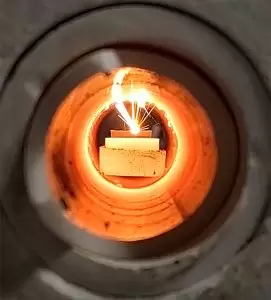With a global chip shortage and the value of rare earth elements rising, efforts to recycle resources from vehicles are more important than ever. And it’s just one of the projects happening in Swinburne’s Automotive Engineering Graduate Program.
Researchers at Swinburne University of Technology are ‘urban mining’ for rare earth elements and metals at car scrapyards around Australia. Drawing on their automotive and mechanical engineering expertise, the team are designing new processes to extract much-needed metals and vehicle components for reuse.
Decommissioned vehicles, e-waste and mobile phones are particularly good sources for urban mining, due to industry support for recycling and the high concentration of metals in one place. The NSW Government developed this periodic table of mobile phones which shows where 25 different metals are used in parts of mobile phones.
As businesses shift to adopt Environmental, Social and Governance practices for investors, how and where materials are sourced has been a major area of focus – sustainability is not the afterthought it once was. But sourcing materials from above ground also makes economic sense, says Muhammad Akbar Rhamdhani, Professor of Extractive Metallurgy and Metals Recycling at Swinburne, who works in the university’s Automotive Engineering Graduate Program (AEGP).
“Take mobile phones for example, while they are mostly made from plastic, they do contain valuable and rare elements such as gold, silver, copper, palladium, lithium and cobalt, all in the one device,” says Rhamdhani.

“To extract the same amount of gold, you can either process at least half a tonne of mined ore from the earth or between 30 to 50 kilograms of mobile phone waste. The other benefit of recycling is that we can design better processes to extract those other metals, adding to its value proposition.”
Students in AEGP work on a range of future challenges in automotive engineering – particularly around safe, sustainable and affordable zero-emission vehicles. Its Masters and PhD program currently includes projects such as finding new methods to enhance the reliability of lithium-ion battery packs and fabricating structural components by additive manufacturing for lightweight vehicles.
But when it comes to sustainability, Rhamdhani’s work might be the most exciting. A current project involves developing detailed thermodynamic, techno-economic, and life cycle assessments of the process route for recovering valuable metals from electric vehicle batteries through hybrid metallurgical processes.
“It will be a compact and cost-effective process that combines the use of high-temperature melting and low-temperature chemical reactions to extract valuable and rare metals,” says Rhamdhani.
“The plan is to make a business case for the automotive industry.”
Cars are an attractive recycling source for such minerals due to their volume. It is estimated that there are more than 1.4 billion passenger or commercial vehicles in operation around the world. Here in Australia, there are nearly four cars for every five people in the country.
It’s not only minerals that are of interest, other components are highly valuable as well. This year, a global shortage of semiconductors is expected to cost the automotive industry at least US$60 billion in global revenue. Some manufacturers have stopped production until they can secure their supplies of semiconductors. Recycling is one way to help ease the squeeze on the supply of chips for the industry.
More than just recycling
AEGP at Swinburne, supported by a $990,000 grant from the Federal Government, is being conducted by a team of seven academic researchers led by Professor Guoxing Lu, Associate Dean of Research in the School of Engineering.
In addition to recycling, AEGP covers a range of other exciting research projects related to sustainability and safety, such as lightweight materials and structures; topological optimisation; biomechanics and safety protection of the human body; and performance and crashing safety of batteries for electric vehicles
Dr Yvonne Durandet is Associate Professor (Advanced Manufacturing) in the Department of Mechanical and Product Design Engineering, and Academic Director (Industry Engagement) in the School of Engineering at Swinburne. She also works with AEGP on a range of exciting projects.
“We’re not only recycling and reusing materials but also supporting designers and engineers with ways to extend the design-life of materials used so that cars can have a longer service life before being decommissioned,” says Durandet.
While it can be a traditional sector, there are many modern design challenges for students to explore with the shift to electric vehicles, digitalisation, autonomous driving, connected vehicles, and new mobility services.
“Automotive engineering incorporates elements of mechanical, electrical, electronics, software and safety engineering, which can transfer through to aerospace and naval engineering as well,” says Durandet.
“It is a great way for students and new engineers to work out what type of challenges they love to solve and guide them into their future careers,” she says.
The Swinburne Automotive Engineering Graduate Program, which includes Master and PhD Training, aim to develop the next generation of industry-ready researchers and leaders in the automotive industry. Industry partners can access student and academic talent through research projects and other opportunities including embedded programs.
Learn more about Swinburne’s automotive engineering programs and how industry can get involved with the Automotive Engineering Graduate Program online.




